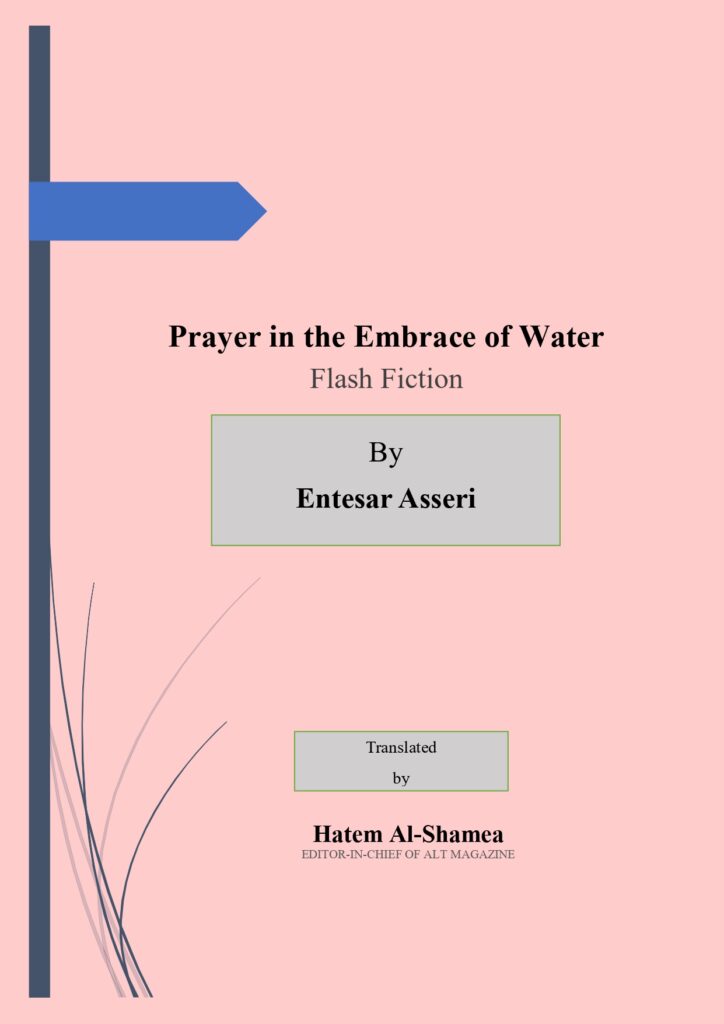Introduction:
Hanan Al-Qubaisi’s oil painting, which won the 2020 ICESCO Prize, offers a poignant portrayal of Yemen’s tragic descent into conflict and the loss of its storied historical identity. By positioning a regal yet grief-stricken woman amid the ruins of Sana’a’s iconic urban landscape, the artist powerfully conveys the profound human toll of Yemen’s political turmoil. This analysis will provide technical, compositional, and thematic insights to better understand Al-Qubaisi’s layered commentary on her homeland’s past glory and present plight.
Technical Mastery:
Al-Qubaisi displays consummate technical skill. Her virtuosic handling of pigments and textures brings vivid life to every meticulously rendered detail. The subject’s face is a striking tour de force, with its nuanced play of lights and shadows sculpting delicate features. Complex silvers and patterns adorning traditional garb are recreated with exquisite sensitivity. Masterful brushwork magically fuses colors into a harmonious whole, transporting viewers into the scene. Al-Qubaisi’s photo-realistic precision lends undeniable credibility to her poignant narrative.
Compositional Poignancy:
The center-staged figure stands as a potent symbol of Yemen’s fallen fortune. Her regal bearing and bold direct gaze command attention amid urban ruins – a subtle allusion to Yemeni queens who valiantly led but now see their nation’s decline. Positioned almost as a landmark amid crumbling architecture, she symbolizes the preservation of national spirit despite physical and political devastation. The horizontal format emphasizes sprawling ruins underscoring immense losses beneath modest skies hinting at hope’s survival. Together, compositional choices profoundly manifest grief over lost heritage.
Thematic Resonance:
The bleeding woman embodies Yemen’s collective wounds from unrelenting conflict, her elegantly patterned attire a vestige of proud tradition now disrupted. As the sole sign of life amid ruins recalling Sana’a’s lost glory, she represents Yemeni resilience and refusal to relinquish identity despite warfare reducing proud buildings to dust. Her fortitude and sustained dignity implicity critique violence diminishing a people’s soul. Al-Qubaisi effectively conveys multi-layered themes of national pride weathering turmoil, identity withstanding upheaval, and quiet perseverance amid overwhelming adversity.
Socio-Political Undertones:
Al-Qubaisi’s work responds to Yemen’s degraded stability, gender inequality and violence disproportionately harming women. As a Yemeni artist witnessing her homeland’s deracination, she creates to process collective trauma and advocate for silenced voices. The painting envisions a defiant woman leading her city’s resurrection – a retort to marginalization of Yemeni women and call for their leadership in rebuilding what warfare destroyed. It also gestures to Al-Qubaisi’s hope that national identity can rediscover expression as violence dissipates. Thus, her work powerfully addresses socio-political realities through symbolic reconsiderations.
Artistic Influences:
Al-Qubaisi fusioned influences – Yemeni folk art’s intricate patterns and Realism’s verisimilitude share the canvas. Folk art traditions inspire ornate details rendered with photorealistic finesse. Expressionism is seen in emotive compositional choices. Meanwhile, her centered solo female figure resonates with feminist art’s themes of reclaiming female agency and visibility. Al-Qubaisi dexterously amalgamates influences to craft a layered social commentary on her nation’s present through appreciation of its cultural roots and assimilation of international movements.
Conclusion:
In capturing a resilient nationalist spirit amid urban ruins, Al-Qubaisi creates an artivist cry for peace, justice and restoration of dignity to her war-ravaged homeland. Technical brilliance conveys the profundity of loss while compositional symbolism envisions hope. Through artistic representations of courage facing political violence with quiet grace, she amplifies silenced voices and envisions post-conflict redemption. Al-Qubaisi’s prizewinning work profoundly documents her nation’s wounds whilst nurturing visions of future flourishing – establishing her as a foremost Yemeni artist commenting on her country’s turmoil through symbolism, emotive aesthetics and assimilation of cultural traditions with international influences.



